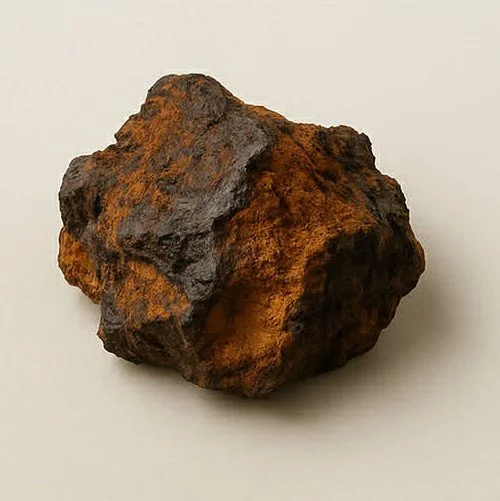The Powerful Benefits of Healing Mushrooms: A Mind–Body–Spirit Guide
/By Laura Michelle Powers: Celebrity Psychic, Author, and host of Healing Powers Podcast
Mushrooms have been used for thousands of years across cultures for healing, longevity, immunity, and spiritual connection. Today, modern research is finally catching up to what ancient wisdom traditions have known all along: functional mushrooms are some of the most powerful natural allies for the body, mind, and energy system.
Unlike culinary mushrooms, functional or medicinal mushrooms contain concentrated bioactive compounds — including beta-glucans, triterpenes, antioxidants, and unique polysaccharides — that support immunity, the nervous system, energy production, gut health, and even spiritual clarity.
Below is a guide to the most popular healing mushrooms, how they work, and how to choose the right ones for your wellness and energetic needs.
The Top Healing Mushrooms & Their Benefits
1. Reishi — The Mushroom of Immortality
Best for: Stress relief, immunity, sleep, spiritual connection
Reishi is one of the most revered mushrooms in Traditional Chinese Medicine. Known as the “Queen of Mushrooms,” it nourishes the adrenals, soothes the nervous system, and enhances immune resilience.
Benefits include:
Calms anxiety and emotional overwhelm
Supports deep, restorative sleep
Balances the immune system
Helps with meditation and intuitive clarity (energetically grounding + heart-opening)
2. Lion’s Mane — The Brain & Nervous System Booster
Best for: Focus, memory, creativity, nerve repair
Lion’s Mane contains compounds called hericenones and erinacines that stimulate NGF (nerve growth factor) — key for brain health and cognitive performance.
Benefits include:
Improved focus, clarity, and productivity
Supports memory and learning
Enhances creativity
Helps repair and regenerate nerve pathways
3. Chaga — The Antioxidant & Immune Shield
Best for: Immunity, inflammation, anti-aging
Chaga is loaded with melanin, antioxidants, and immune-modulating compounds.
Benefits include:
Strengthens and stabilizes immune function
Reduces inflammation
Supports healthy skin, hair, and cellular repair
Helps alkalize and detox the body
4. Cordyceps — The Energy & Endurance Enhancer
Best for: Energy, stamina, libido, athletic performance
Cordyceps increases oxygen uptake and supports ATP (the body’s energy currency).
Benefits include:
Natural energy boost without jitters
Enhanced physical and sexual stamina
Great for athletes and busy entrepreneurs
Supports lung health and endurance
5. Turkey Tail — The Gut & Immunity Guardian
Best for: Gut health, immune balance, microbiome support
Turkey Tail contains PSK and PSP, powerful polysaccharides researched for immune modulation.
Benefits include:
Deep immune support
Encourages a healthy gut microbiome
Supports natural detoxification
Wonderful during times of healing or recovery
6. Shiitake — The Heart & Anti-Inflammation Support
Best for: Heart health, circulation, skin, and longevity
Shiitake contains lentinan, a compound long studied for immune and cardiovascular support.
Benefits include:
Supports healthy cholesterol and circulation
Strengthens immunity
Nourishes skin and connective tissues
Anti-inflammatory and anti-viral properties
Energetic & Spiritual Benefits of Mushrooms
Beyond the physical, functional mushrooms also support the subtle energy body, making them ideal allies for intuitive and spiritual work.
Reishi: Grounds the root chakra and opens the heart
Lion’s Mane: Activates crown & third eye clarity
Chaga: Shields the aura and strengthens energetic boundaries
Cordyceps: Increases life-force (chi/prana)
Turkey Tail & Shiitake: Support balance, harmony, and emotional immunity
Many people report enhanced intuition, clearer meditation experiences, and a deeper sense of connection when integrating functional mushrooms into their wellness routines.
How to Take Functional Mushrooms
You can enjoy medicinal mushrooms in many forms:
Powders added to coffee, tea, or smoothies
Capsules for convenience
Tinctures for fast absorption
Mushroom coffees or cacao blends
Culinary use (shiitake, maitake)
Pro Tip: Look for fruiting-body extracts (not mycelium on grain) for the highest potency.
Final Thoughts
Functional mushrooms offer a powerful, natural way to support immunity, brain health, emotional balance, spiritual connection, and overall vitality. Whether you’re looking to boost creativity, enhance meditation, strengthen your body, or elevate your intuitive gifts, these ancient allies are here to support you.

























